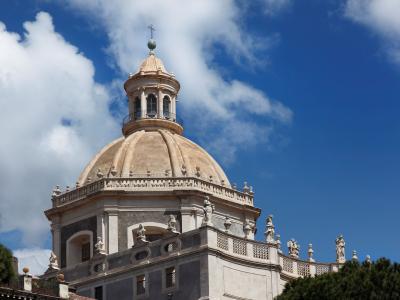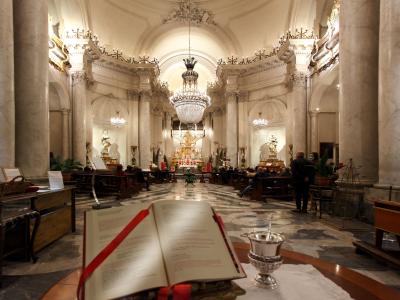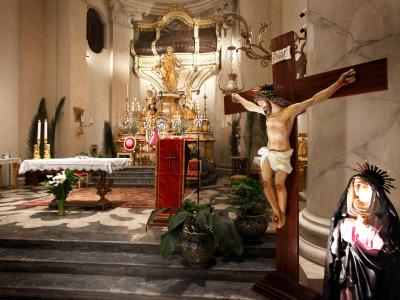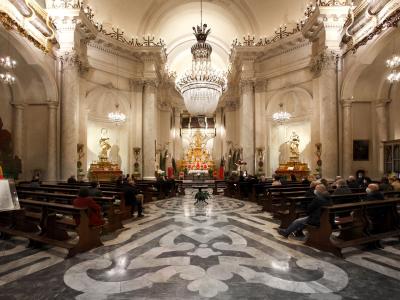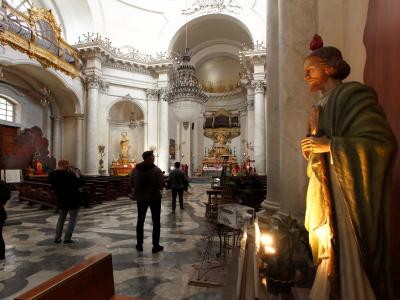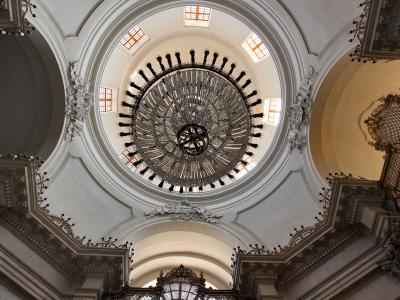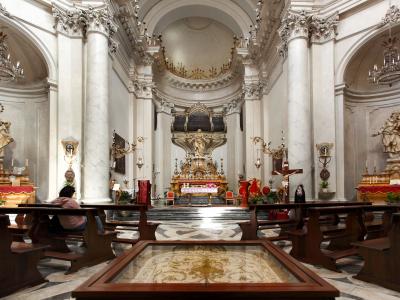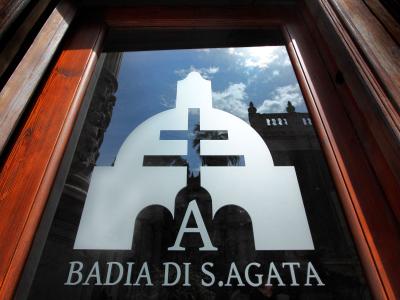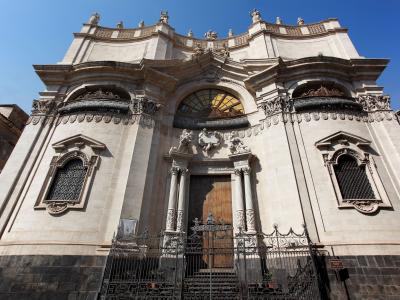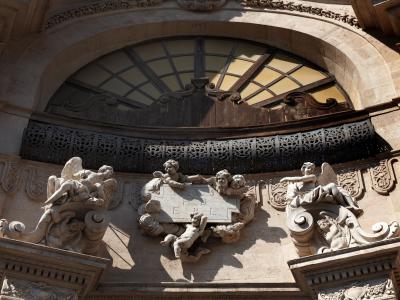Overlooking Via Vittorio Emanuele, the church of the Badia di Sant'Agata, together with the adjoining former monastery, occupies an entire city block. In the wide setting of the Platea Magna, it captures on itself the attention otherwise distracted by the other Baroque beauties of the Cathedral, the Elephant Fountain and the Senatorial Palace, home of the Town Hall.
Built on the ruins of the ancient church and convent dedicated to St. Agatha in 1620 by Erasmo Cicala and collapsed in the 1693 earthquake, it was rebuilt at the hands of Architect Giovan Battista Vaccarini, who worked on it from 1735 to 1767, becoming one of his many architectural masterpieces. It has an elongated Greek-cross plan inscribed in an oval that has its major axis orthogonal to the facade; it alternates convex-concave-convex surfaces on the first order , and three times concave on the attic floor, creating an athematic so dear to Baroque art, that of movement.
In 1742 the dome was set on arched structures of lava stone and with ribs and moldings of jurgiulena stone. He strongly marked an architecture in harmony with the environment, with the principles of his time and knew how to sink into the distinctive character of local materials and interpret the stylistic features of the traditional repertoire.
Giovan Battista Vaccarini did not hesitate to incorporate into the design of his works parts that had already been built or elements that had already been prepared, and, as in the Senatorial Palace, he grafted onto a pre-existing base with rusticated pilasters, the momentum of the flat pilasters of the upper orders; he did not refuse to set in the taut wave of the concave wall a portal with twin, richly decorated columns, as desired by the abbess of the time. (Giuseppe Pagnano from The Firestone, 1994).
The church of the Abbey of St. Agatha, an architectural masterpiece by Giovan Battista Vaccarini gives off a prodigious visual vitality so as to infuse the entire structure and all its decorative parts with movement. The expressive force of the construction is replicated in the interior part where the choice of the Greek cross reveals an aspiration to perfection in the balance between static and harmonious. The interior decoration is very simple and essential: white stucco on the walls, statues, precious altars and marble embroidery on the floor.
On each altar are placed polished stucco statues: St. Euplius, St. Joseph, St. Agatha, the Immaculate Conception, and St. Benedict. Gilded jellies brighten the walls. From the high apse, twenty-five small lights are suspended, and around the cornice runs a grille decorated with candelabra. A very precious crystal chandelier marks the center point of the oval that anticipates the altar. The church does not keep canvases as is usually the case in other religious buildings; inside the sacristy, however, many paintings of a sacred nature are kept.
Map
BADIA DI SANT'AGATA
Via Vittorio Emanuele II, 182, 95131 Catania CT
Information
Opening hours of the church and dome
MON
MAR
WED
THU
FRI
SAT
dalle 09:30
alle 12:30
dalle 15:30
alle 18:30
SUN
dalle 09:30
alle 13:00
dalle 16:00
alle 20:00
Prezzo:
Visit to the Great Choir, Terraces and Dome
€5.00
Reductions for groups (> 15 people) and organized parish groups. Possibility of annual subscription





